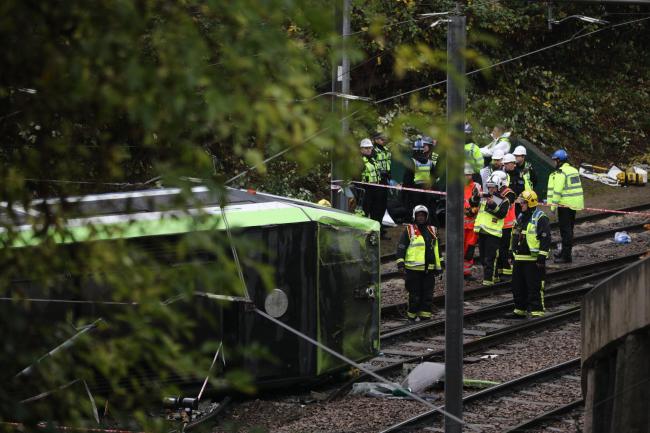
Trevor Sterling legally represents several victims of the Croydon tram crash.
Here he explains that whilst the introduction of an automated breaking system is an important step towards making London passengers safe, further national improvements are needed to protect tram users:
The whole nation was shaken by the news of the tram crash which unfurled in Sandilands in November 2016.
The crash raised vital questions for us all on how safe we really are when taking public transport – particularly as the tram is heavily relied upon by South Londoners.
As a lawyer representing several of the victims I have seen first-hand the devastating consequences when safety issues are not given proper consideration. Our resounding message is clear: tram safety must be taken seriously.
Last week, it was announced that London’s trams will be fitted with an automatic braking system.
The change is in line with one of 15 safety recommendations made by the Rail Accident Investigation Branch (RAIB) in their investigation into the crash.
The braking system will automatically apply brakes if a tram exceeds speed limits – a welcome addition, considering the speed of the tram in question, which was travelling 43.5mph in a 12mph zone.
Moore Blatch and their clients have been calling for these vital changes to be made ever since the crash occurred over two years ago, so this is certainly a huge achievement which will be celebrated by the community.
 Seven people died in the crash
Seven people died in the crash
The new safety measures are the first in the UK, although they are already available across Europe.
The new system offers a really positive step forward, bringing London’s tram safety up to speed with the rest of Europe, and providing an essential safety net for South London residents who rely on the tram to go about their daily lives.
These measures – which target high-risk locations in London – are a definite step in the right direction. Nevertheless, we still have a long way to go to ensure that tram safety is taken seriously across the UK.
As a part of their recommendations, the RAIB endorsed a national safety body which would regulate trams across the UK.
Disappointingly, this has been delayed by the Department for Transport, and any requests for a timescale within which we might expect such a body has been met with relative silence.
Sarah Jones – Local MP for Croydon Central – has expressed her dismay at this silence and at the slow pace of government response to this tragedy; the effects of which are still being felt today.
Indeed, several of the recommendations made by the RAIB cannot be met until a national body for tram safety is established, and so time really is of the essence if we are to ensure that tram safety is secured on all levels.
We must remember that this is not just an issue local to Croydon: tram safety and the safety of all British commuters is a national issue.
Until a national body is set up, the rollout of necessary changes to UK tram safety will be piecemeal and protracted. It is only right that vital safety features should be implemented to protect all British users, not only Londoners.
Trams are a fantastic way to get around town: efficient and sustainable, they should certainly represent an asset to a city’s infrastructure.
Following two years of discussions and investigations, we know what features must be implemented to maximise their safety.
However, there will be no co-ordinated effort to introduce these updates until the process is overseen by a national body.
As Londoners, we must stand by our neighbours in Manchester, Sheffield, and Blackpool, who all rely on their tram systems to travel around their cities.
The creation of a national body to regulate the UK’s trams is now an imperative to protect passenger safety and to consolidate our tramways as safe and efficient networks within our transport infrastructure.


Comments: Our rules
We want our comments to be a lively and valuable part of our community - a place where readers can debate and engage with the most important local issues. The ability to comment on our stories is a privilege, not a right, however, and that privilege may be withdrawn if it is abused or misused.
Please report any comments that break our rules.
Read the rules here